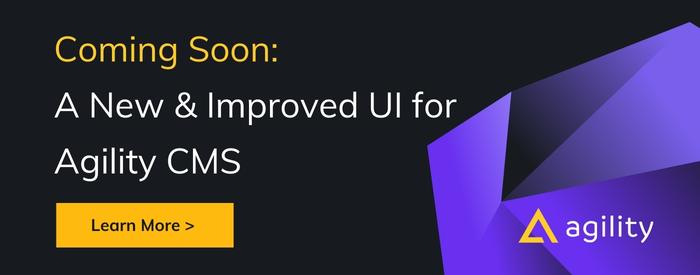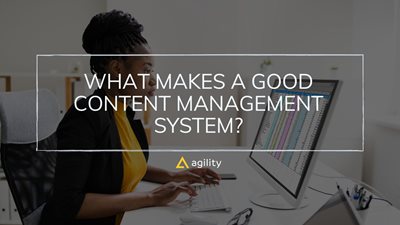Digital Content Management Best Practices


In this fast-paced digital world, digital content is the backbone of any business that aims to thrive. And as your business grows, so will your digital content.
You might create tons of digital content this month alone. The problem is that keeping track of these assets and making sure they’re accessible when needed can be challenging.
Thanks to the internet, though. Now that the adoption of digital content has grown across industries, companies have recognized the need to streamline their processes for storing, locating, and retrieving digital media.
That’s where digital content management (DCM) comes into the picture.
A capable DCM strategy prevents fragmented information and unnecessary files from being stored once and everywhere, ensuring that only approved digital assets are accessible when needed.
That all said, a solid DCM means nothing when you don’t know how to use them in the first place. So, let’s break down some DCM best practices along with tiny bits of the basics.
What Exactly Is DCM?
The name of digital content management itself is kind of self-explanatory. It’s a broad category that describes systems that help enterprises manage digital assets. It refers to a process involving the creation, maintenance, and distribution of all digital content for a brand.
In many ways, DCM is an extension of digital marketing, using various types of content to attract and retain customers. DCM encompasses the creation of brand assets such as presentations, articles, photos, training videos, and podcasts.
It also refers to the distribution of that content to multiple channels, including websites, social media platforms, and email campaigns.
Why Is Digital Content Management Important?
As more people rely on the internet for information and purchasing decisions, the role of digital content becomes ever more important. DCM manages all parts of the process, including creation, and allows companies to scale up their efforts to reach more people.
With the help of DCM, brands can create and schedule a consistent flow of high-quality content and distribute it to reach the right people at the right time.
Also, do you know that The average employee spends 20% of their time every day looking for a lost file? Because content management systems help businesses organize and store all their digital content in one place, a well-designed system makes it easy for employees to find the content they need when they need it.
3 Types of DCM Platforms
Digital content management software is designed to help businesses create and manage digital assets.
Depending on the platform, users can record podcasts and create blogs and social media posts. They can also create visual assets like images and videos. Other tools can be used to manage the entire lifecycle of digital content, from creation to distribution.
There are three well-known digital content management platforms to choose from or integrate:
Blogs
Blogs are practical content marketing tools. You can grow your blog and use it to generate leads, create brand awareness, and drive sales.
The functionality of a blog can also be extended to include live chats and moderated discussions, polls, and quizzes.
Content Management Systems (CMS)
CMS platforms create websites, apps, and digital experiences. CMS tools are also suitable for managing SEO elements and building websites.
One of the most powerful CMS in the market is Agility CMS. This CMS offers a hassle-free way to create content experiences, from creating content to repurposing it.
The intuitive UI and familiar authoring experience make it easy for even non-technical teams to take control of the content.
Digital Asset Management (DAM)
Digital asset management software creates and stores visual assets such as product images, graphs, infographics, and videos. Users can add metadata to organize the graphic assets.
What to Look for in a Digital Content Management Platform
There are many digital content management platforms. It’s easy to fall into the trap of analysis paralysis. Also, there’s no such thing as a one-size-fits-all DCM.
But, some essential things to look for when choosing a digital content management platform. This will help you narrow down all those choices.
Ease of Creating Content
The first thing to consider is the ease of creating content. Content marketing campaigns can be time-consuming.
Managing the time required to create content is just as important as managing the cost.
Branding Capabilities
Another important factor is the branding capabilities of the platform. It should allow users to create customized templates and brand assets that adhere to the brand’s design and style, including covers and headers.
Scalability
The chosen platform should be scalable, allowing brands to ramp up content creation when needed.
When there’s a spike in orders during a holiday weekend or a promotion on a particular product, businesses need to be able to increase their output to keep up with demand.
Best Practices for Effective Digital Content Management
Now, we get into the nitty-gritty details of best practices for using DCM so you can get the full potential. Let’s dive in.
Tip #1. Choose the Right DCM Platform
While some DCM platform is great for small businesses, others are better suited for enterprise-level companies. And the best DCM platform is the one that meets the specific needs of your company.
For example, if you have a large amount of content that needs to be managed, you will need a platform to handle this load.
On the other hand, if your business is primarily focused on sharing content internally, you may not need all of the bells and whistles offered by some of the more robust DCM platforms.
So, select a platform that can accommodate your company's growth. Otherwise, you may find yourself paying for features you don't need or struggling to use the platform effectively.
Tip #2. Implement an Effective Workflow
An effective workflow is crucial for getting the most out of your DCM platform. By mapping out a clear workflow, you can ensure that all content is properly managed and published in a timely manner.
This will save you time and money in the long run, as you won't have to waste resources fixing errors or publishing content late.
There are a few things to keep in mind when creating an effective workflow. First, you need to identify all the steps involved in publishing content. Second, you need to determine who is responsible for each step. And finally, you need to establish clear deadlines for each task.
Following these tips, you can create a workflow to keep your content process running smoothly.
Tip #3. Audit Content Regularly
It's important to audit your content regularly to ensure that it is accurate and up-to-date. This can be time-consuming, but it is worth it in the long run.
By auditing your content, you can avoid costly errors and keep your audience informed. You can say that auditing your content means you must review all the content your company has published. This includes blog posts, articles, whitepapers, eBooks, and more.
Make sure to check for accuracy, spelling mistakes, and outdated information. You should also ensure that all links are working correctly. By auditing your content regularly, you can keep your audience engaged and avoid any potentially conversion-hurting mistakes.
Tip #4. Understand the Buyer’s Journey
To create content that resonates with your audience; you need to understand the buyer's journey. The buyer's journey is the process your potential customers go through when considering a purchase. There are three stages to the buyer's journey: awareness, consideration, and decision.
At the awareness stage, prospects are just becoming aware of their problem or need. They are not yet considering solutions.
At the consideration stage, opportunities begin researching potential solutions to their problem. Finally, prospects are ready to select a solution and purchase at the decision stage.
By understanding the buyer's journey, you can create content that speaks to your audience at each stage of their journey.
Tip #5. Keep Your Content Organized
If you want to get the most out of your DCM platform, you need to keep your content organized. This means creating a clear and consistent folder structure and tagging all of your content properly.
By keeping your content organized, you can save time when searching for specific pieces of content. You will also be able to track your content more effectively and ensure that it is being used properly.
Tip #6. Create Pillar Pages, and Content Cluster
DCM platforms are great for creating pillar pages and content clusters. Pillar pages are long-form pieces of content that cover a specific topic in depth.
Content clusters are groups of related content (articles, blog posts, and other resources) that all link back to the pillar page.
By creating pillar pages and content clusters, you can make your content more discoverable and improve your website's SEO. You can also use this strategy to target specific keywords and increase your chances of ranking in Google search results.
Tip #7. Pay Attention to the Monitoring
No matter how brilliant the DCM platform you use, if you don't pay attention to the monitoring, you will not be able to use it at its full potential.
The best way to do this is by setting up alerts for specific keywords or topics. This way, you will be notified whenever new content is published that is relevant to your business.
You can also use the monitoring feature to keep track of your competition. By monitoring their content, you can stay one step ahead and ensure that you always provide your audience with the best possible experience.
Tip #8. Train Your Employees
It's crucial to ensure that your employees can utilize the DCM platform and all the features it has to its full potential.
The best way to do this is by providing training and support. There are many ways to provide training, such as online tutorials, in-person workshops, or one-on-one coaching.
Optimizing Your Digital Content for Greater Success
Successfully using digital content as a marketing tool starts with the creation process. Before diving into the content, brands must clearly understand their goals and target audience.
Digital content is an investment, and brands need to ensure they’re putting their money toward marketing activities that pay off.
So, before creating anything, it’s important to ask yourself: What are we trying to accomplish with this piece of content? How is it going to help us achieve our goals?
Digital content can be used to attract new leads, inform current customers, or even drive sales. It can also strengthen a brand’s reputation and create a positive image among potential customers.
When you have a solid understanding of your digital content management in the first place, it'll be much easier for you to get an insight into a potential DCM platform that can help you with your content goals.
Wrapping Up
Digital content management is a marketing tool designed to help brands create and distribute visual and written content to increase visibility and drive sales.
Brands need to choose the right digital content management platform that allows them to create, manage, and distribute visual and written content. With the help of a DCM platform, brands can create and schedule a consistent flow of high-quality content.
All that said, you need to ensure to leverage the DCM platform you use. As mentioned briefly, all those advanced features of any DCM platform mean nothing if the user can’t get the most out of it. With all the best practices above, you now have an insight into how to use the DCM platform effectively.

About the Author
Andre Oentoro is the founder of Breadnbeyond, an award-winning explainer video company. He helps businesses increase conversion rates, close more sales, and get positive ROI from explainer videos (in that order).
Twitter: @breadnbeyond
Email: andre@breadnbeyond.com
LinkedIn: Andre Oentoro





